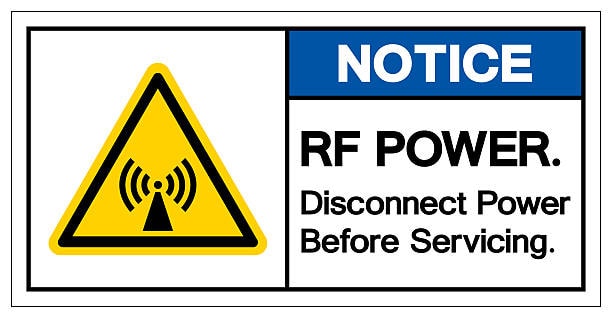
Introduction
Every electrical circuit depends on voltage and current as its fundamental properties although these two elements focus on different characteristics of electric currents. People who request information about “6 volts and amps” are seeking understanding between electric properties, including how many amp hours are available . People often mistake the incorrect belief that electrical voltage quantitatively translates to current strength. Ohm’s Law applies to these properties since 6-volt sources generate amps based on circuit resistance values. The article offers an extensive study of this relationship with real-world explanations and applicability analysis throughout.
Understanding Voltage and Current: The Basics

The electrical potential difference between two points becomes measurable as voltage through the unit of volts (V). A force drives electrical current operation, which is fundamentally governed by voltage and current .
Electric charge flow rate that passes through conductors is measured in amperes (amps abbreviated as A). A circuit provides information about electron flux which shows electron number passage through one point during second measurements.
The two properties of voltage and amperage have no direct conversion path since both need resistance to work jointly, and several factors can influence this relationship . The relationship explained by Ohm’s Law appears in this scenario.
Ohm’s Law: The Key to Calculating Current from Voltage amp hours
The voltage and current that flow through any circuit relate to each other through the energy resistance according to Ohm’s Law.
I = V ÷ R
When measuring a 6-volt power source, it generates current delivery according to the precise nature of circuit resistance.
Current (amps) = 6 volts ÷ Resistance (ohms), allowing one to calculate how many amp hours the system can provide.
The voltage of 6 volts generates currents according to the following values:
- The circuit will give 6 amps when using 1 ohm resistance.
- The circuit will generate 3 amps with a resistance value of 2 ohms.
- When the circuit exhibits a resistance of 12 ohms it will lead to a current flow of 0.5 amps (or 500 milliamps).
- The circuit measuring 1,000 ohms produces current output of 0.006 amps that equates to 6 milliamps.
The lack of knowledge regarding resistance and the discharge rate makes it impossible to precisely determine the amount of amps from a 6-volt source.
Real-World Applications of 6-Volt Systems

Automotive and Vehicle Applications car batteries
Prior to the 1950s, most vehicles used six-volt electrical systems in their design, particularly those powered by lead acid batteries. The electric current consumption in such systems is adjusted according to each component.
- A 6V headlight might draw 2-3 amps
- The simultaneous operation of a starter motor depends on the flow of 30-50 amps
- The current input needed by a radio ranges between 0.5-1 amp.
The present-day market uses 6V batteries, a type of battery primarily for motorcycles along with ATVs and specialized vehicles despite 12V being the industry standard across auto systems.
Electronic Devices and Gadgets

Small electronic products function through power supply systems operated by 6V, which may involve various charging cycles .
- Remote-controlled toys operate at 0.2 to 1 amp depending on their motor movement intensity
- Various portable audio devices function with 6V electric power supply system which consumes 0.1 to 0.5 amps of current.
- The current intensity of LED systems ranges between 0.05 and 0.5 amps at 6V power depending on the LED intensity and number of components.
Scientific and Test Equipment

The standard power source in laboratory equipment consists of 6V power supplies that often have specific discharge rate characteristic right battery . These supply power to various applications when testing.
- Electrochemical experiments with current needs from microamps to several amps
- Component testing with precise current control 12 volt battery
- Educational demonstrations of basic electrical principles surface area
Power Calculation: The Watt Connection
Electrical systems demand power measurement through watts since it stands as vital as current and voltage when operating these circuits. The relationship is:
Power (watts) = Voltage (volts) × Current (amps) can also help determine total ampere hours in a battery lead plates.
For a 6-volt system:
- A circuit operating at one ampere-rate pulls a power value of 6 watts
- A circuit that operates with a current of 0.5 amps uses power equal to 3 watts.
- The electrical system using 2 amps requires 12 watts of power cca rating.
Battery life along with heat production and energy usage needs this calculation for proper assessment.
Practical Example: Calculating Current for a 6V Battery

Finding the current delivery rate from a 6V battery represents a typical problem in this situation.
A toy car motor operating on a 6V battery uses a device with 10 ohms of resistance.
The 6V battery divides by the 10Ω resistance to produce a current level of 0.6A (600mA).
During operation the toy car receives 0.6 amps from the battery supply. The 2000mAh battery can power the vehicle operation for 3.33 hours since its rated at 2000mAh ÷ 600mA.
Current Limitations and Safety Considerations

A power source operates within specific current delivery boundaries that users must recognize, which directly affects battery life .
- The battery contains resistance elements that restrict its ability to generate maximum current output.
- Power supplies need to obey their designed current limitation level.
- Each wire together with its components contains a maximum specified current that protects them from damage.
Safety requires that circuits supplied by 6V power sources contain suitable fuses and circuit breakers to prevent several hazards.
- Overheating of wires and components
- Battery damage
- Fire hazards
- Component failure due to excessive current
A voltage rating of 6V does not eliminate the possibility of dangerous heat generation and fire risks that occur from high current flow.
Common 6V Power Sources and Their Current Capabilities
6V Batteries ampere hours
When it comes to 6V batteries their current output ranges differently among different battery types.
- Lead-acid 6V batteries which power older vehicles produce a momentary current output between 30-100 amps most car batteries.
- The standard current output of 6V alkaline lantern batteries ranges between 0.5 and 2 amps.
- The current output range of 6V lithium batteries depends on the battery chemistry and design parameters between 1-5 amps cold cranking amps.
- The electrical output of four connected AA 1.5V batteries operating in series at 6V ranges from 0.5 to 2 amps based on battery chemistry
6V Power Adapters and Transformers
Specific current ratings accompany all wall adapters and transformers that produce 6V output power.
- The current output of small adapters typically does not exceed 500mA (0.5A).
- Medium adapters typically provide 1-2A
- Power supplies measuring larger dimensions deliver 3 to 5 amps or even stronger amperage.
An adapter’s current rating defines the highest safe output level in amp hours and does not establish a projection for device consumption cold temperatures.
Conclusion
The inquiry about the number of amps within a six-volt system reveals basic errors in fundamental electrical concepts. The quantity of volts (6 volts) and amperes (amps) exists as separate entities yet these quantities connect through Ohm’s Law by the circuit’s resistance modifier. The determination of amp flow requires knowledge about circuit resistance when using a 6-volt source how much amperage.
A 6-volt power supply discharges between several milliamps and dozens of amps based on lead resistance in the circuit as well as the electrical source capacity. The understanding of this relationship stands crucial for building and choosing electrical solutions in order to create protected and efficient systems suitable for various applications voltage readings.
